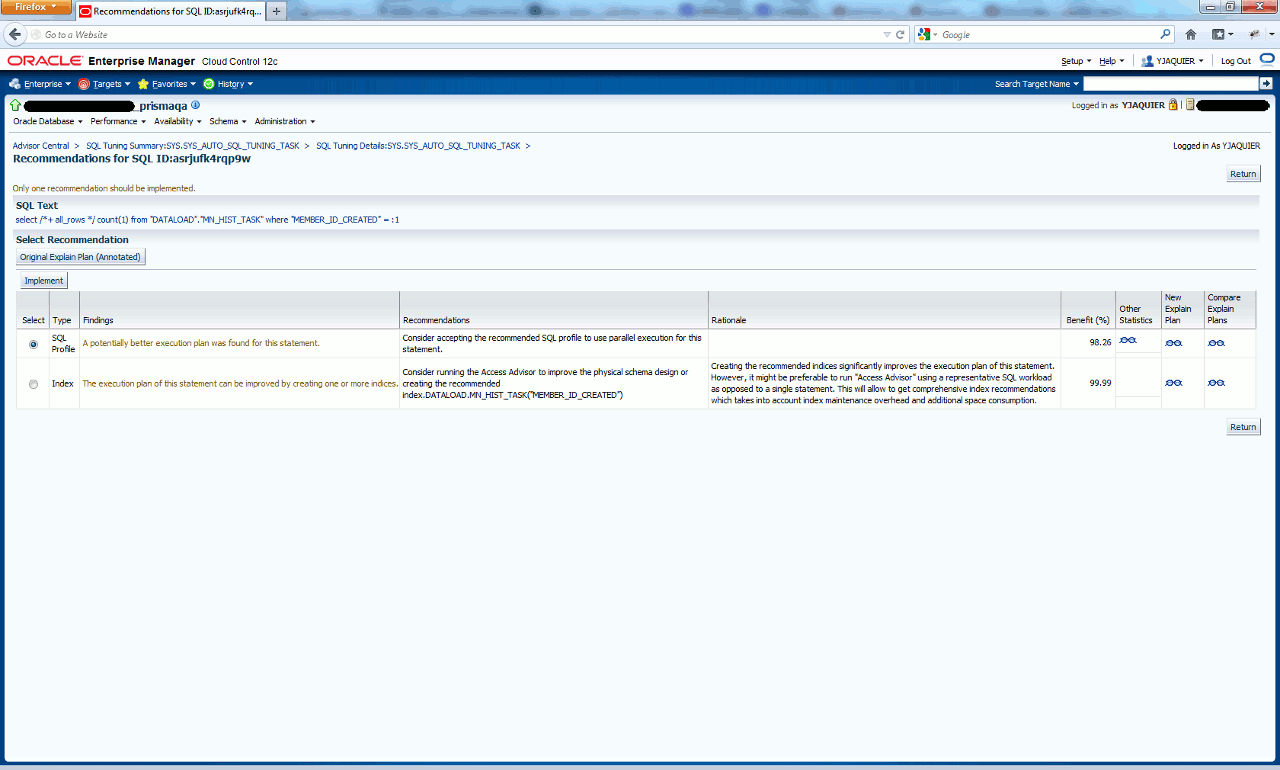Oct 31, 2012 The DBMSAUTOSQLTUNE package is the interface to SQL Tuning Advisor (DBMSSQLTUNE) when run within the Autotask framework. The database creates the automated system task SYSAUTOSQLTUNINGTASK as part of the catalog scripts. This task automatically chooses a set of high-load SQL from AWR and runs the SQL Tuning Advisor on this SQL. When SQL statements are executed by the Oracle database, the query optimizer is used to generate the execution plans of the SQL statements. The query optimizer operates in two modes: a normal mode and a tuning mode. In normal mode, the optimizer compiles the SQL and generates an execution plan.
Oracle 12c offers a useful utility called the SQL Tuning Advisor. You can use this built-in tool to provide suggestions or recommendations about certain SQL statements. Although it may not always give perfect advice, just like anything else, having it in your toolbox of tuning techniques is beneficial.

Use PL/SQL and the internal package DBMS_SQL_TUNE to create a tuning task. Type this:
You should see the following:
In the preceding command, note the TIME_LIMIT of 60. That limits the processing time to 60 seconds. You may not always want to run something like this for long periods in your database, because it incurs system overhead.
Execute the tuning advisor with your task by typing this:
Because of the limit of 60 seconds provided in the task creation, this step may take up to 60 seconds to complete. During this time, your prompt won’t come back.
When it completes, you should see this:
If you’ve set a longer time and are getting impatient, you can open another SQL window to make sure that the task is still executing by typing
You see something like the following:
When the execution is complete, you can view the results by running the BMS_SQLTUNE.report_tuning_task procedure. Type the following:
For the sake of space, we’ve snipped some sections from the output that follows, but you see something like this:
The latter part of the report shows the before and after execution plans. In this case, you’ve seen the before when you were generating execution plans. Go ahead and add the index, regenerate the execution plan, and see whether you’ve made an improvement.
Before you add the index, note that the recommendations give the SQL to add the index:
Also note that Oracle gives a warning:
Add the index with your own name by typing this:
You should see something like the following:
Take a look at the execution plan. Type the following:
And then type
You should see output like this:
Now that you’ve added the index, a few things are evident:
The cost of the plan dropped from 40336 to 5.
There are now six steps.
The full table scan is gone. Instead you see the use of your new index.
Often one of the tough parts about tuning a database is having a solid understanding of the application and the data. The issue might not always be obvious. Sometimes engaging other application and data experts helps.
Oracle Sys Account
Explain to them your findings and what you propose. They may be able to help you come to a conclusion. Also, if the data is part of a packaged third-party application, sometimes opening a ticket with the vendor is the way to go.